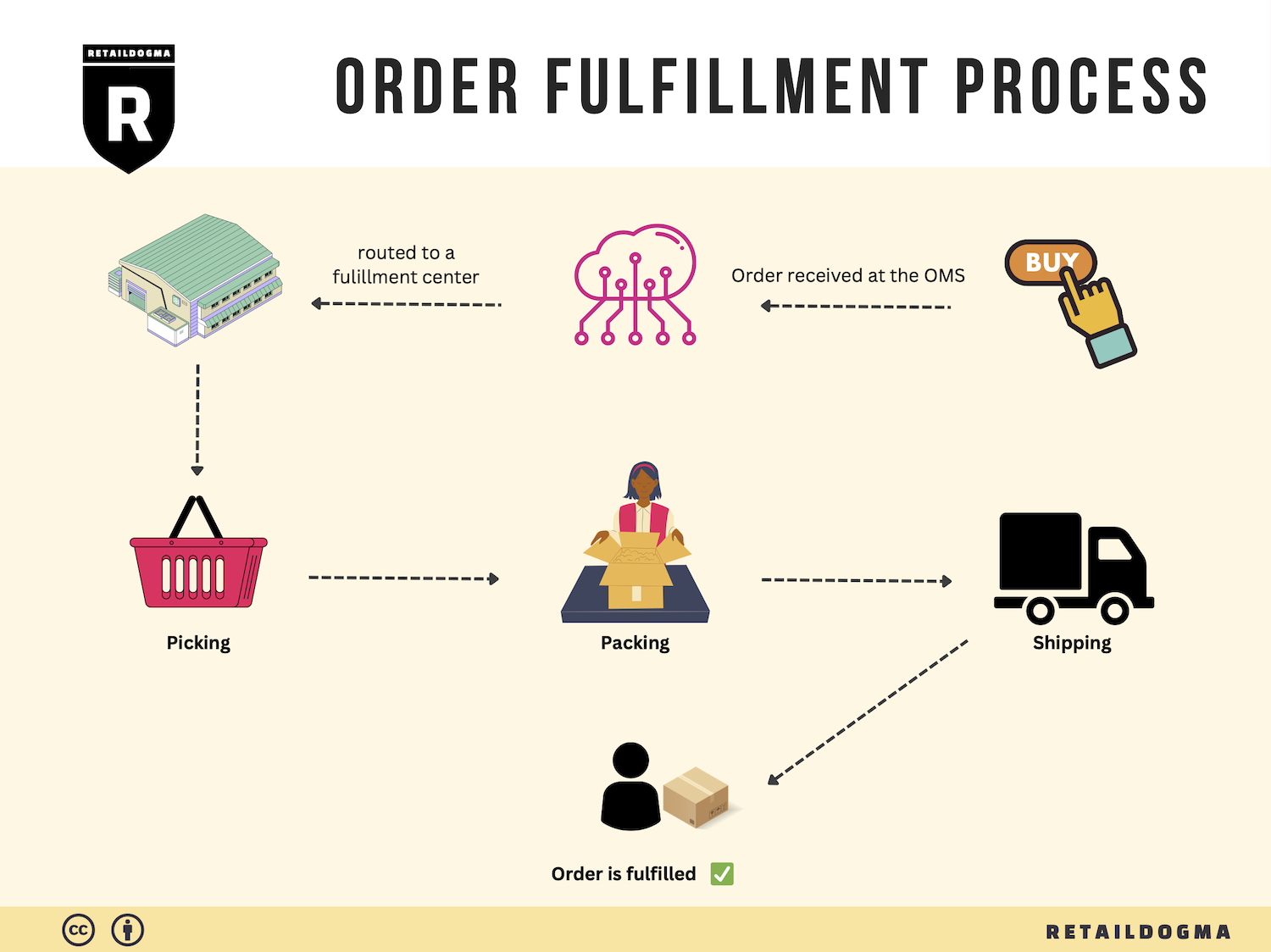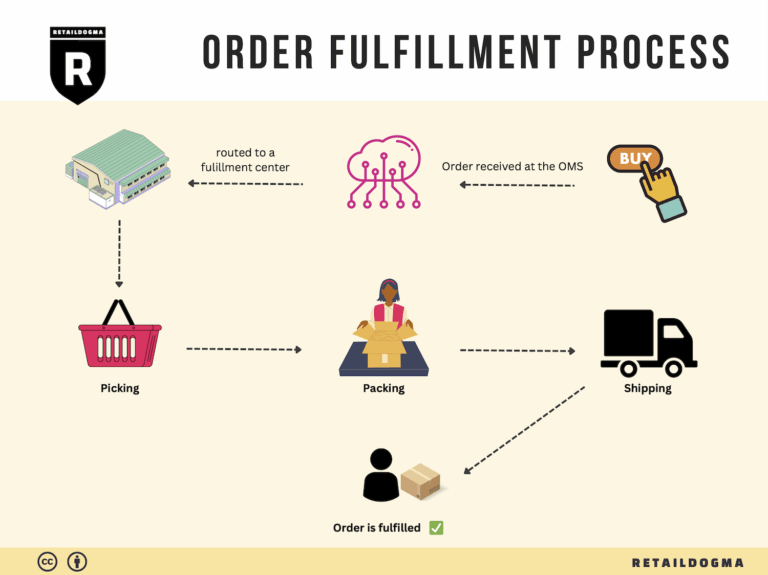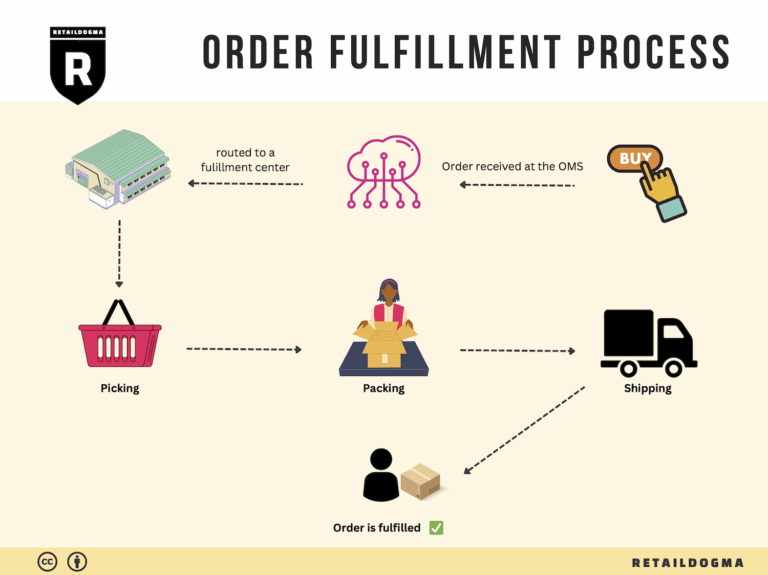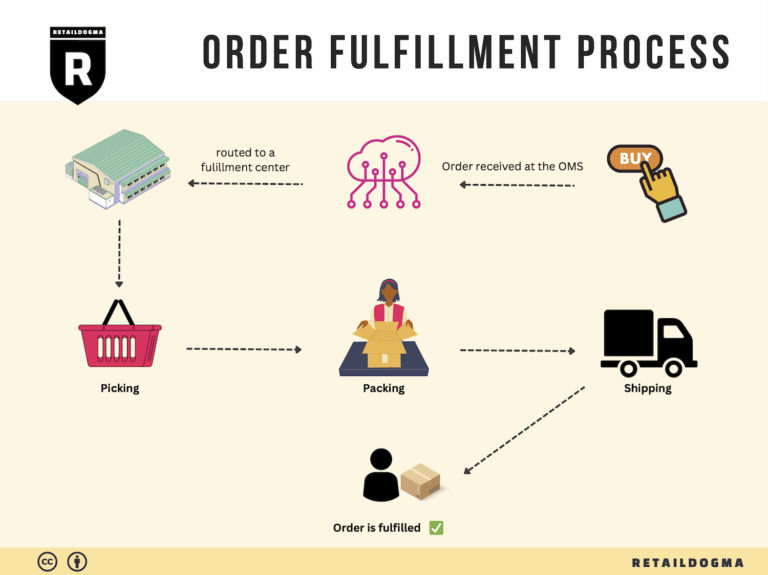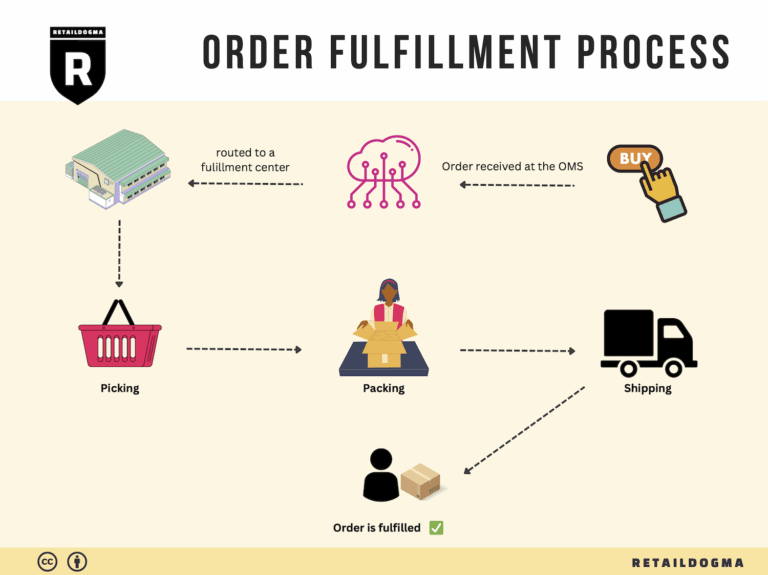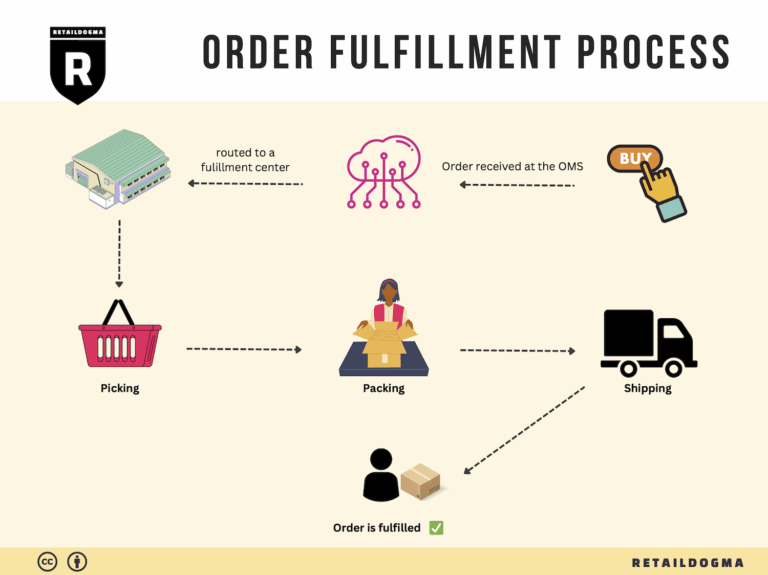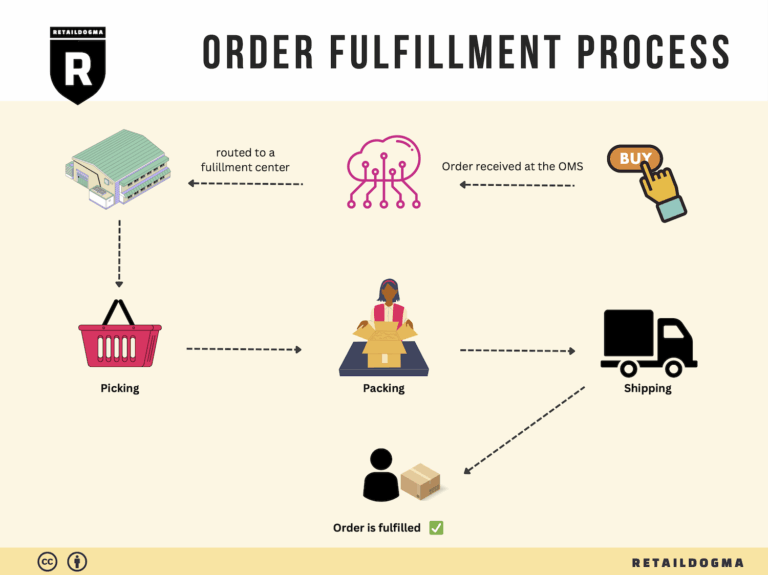What Is A Fulfillment Center? A Complete Guide (2025)
What is E-commerce Fulfillment? An Introduction for Growing Businesses
Understanding the Fulfillment Challenge in E-commerce
As an e-commerce business owner, the thrill of growing sales can quickly turn into a daunting challenge when it comes to managing the logistics of packing and shipping orders. Many entrepreneurs find themselves overwhelmed by the sheer volume of orders, the intricacies of inventory management, and the pressure of meeting customer expectations for timely delivery. This is where effective e-commerce fulfillment comes into play.
At its core, fulfillment is the process of getting a product from your warehouse to your customer’s doorstep. It involves a series of steps, including inventory storage, order processing, packing, and shipping. Understanding these components is essential for scaling your business without sacrificing quality or customer satisfaction.
What This Guide Covers
In this guide, we will explore the various models of e-commerce fulfillment that can support your growth. Two popular options are Third-Party Logistics (3PL) and Fulfillment by Amazon (FBA). Each of these models has distinct advantages and considerations, and we will break down what each entails so you can make an informed decision.
Additionally, we will delve into the core services provided by fulfillment partners, including inventory management, order tracking, and customer service. Understanding these services will help you identify what you need to streamline your operations.
Choosing the right fulfillment partner is crucial for your business’s success. We will provide practical tips on what to look for in a partner, including scalability, technology integration, and responsiveness. Moreover, we will discuss pricing structures to ensure you understand the cost implications of different fulfillment options, allowing you to budget effectively as you scale.
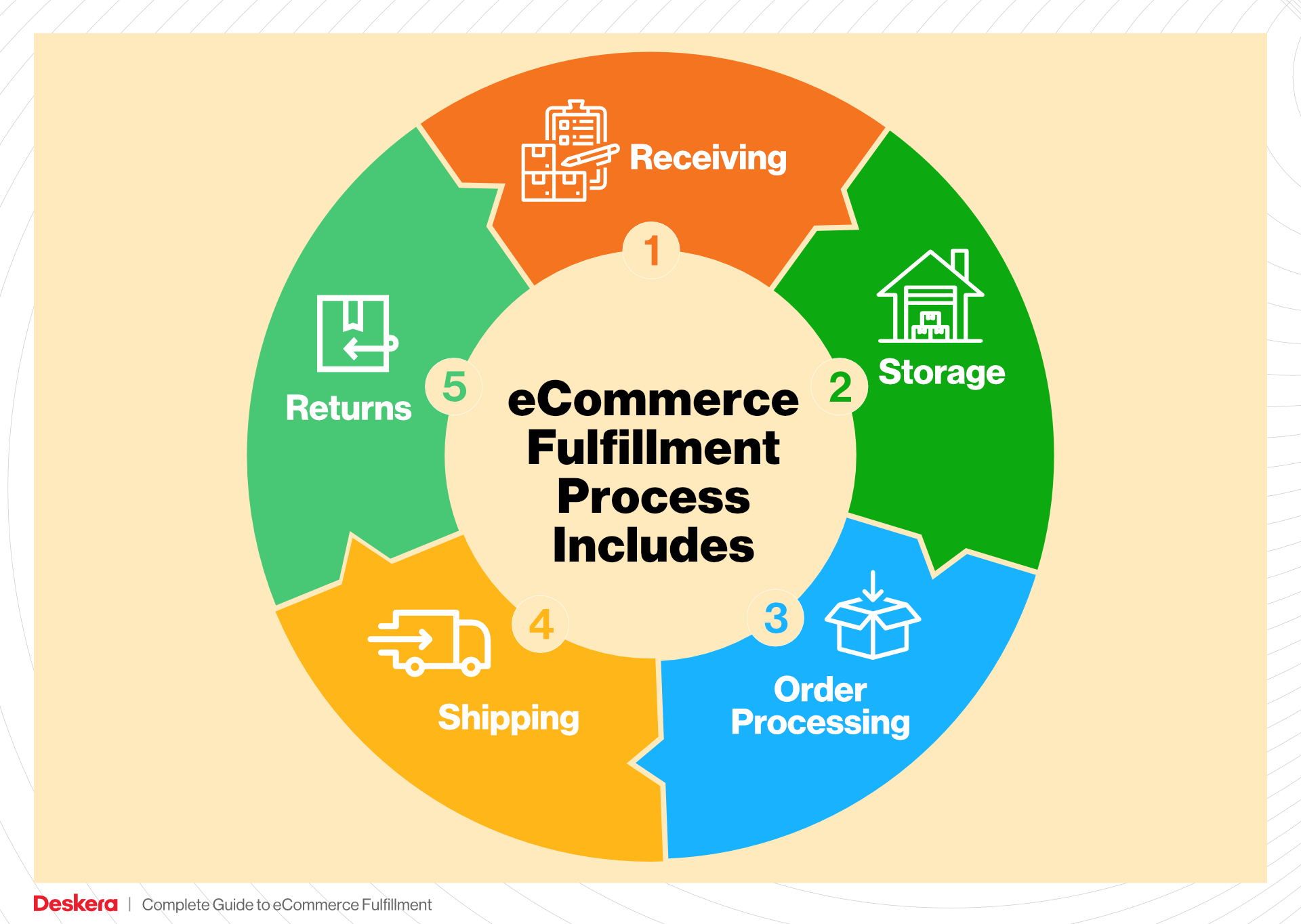
Empowering Your Business Decisions
The goal of this guide is to empower you with the knowledge needed to navigate the complexities of e-commerce fulfillment. By understanding the different fulfillment models, core services, and partner selection criteria, you can make smart, strategic decisions about your logistics. Ultimately, effective fulfillment can enhance your operational efficiency, improve customer satisfaction, and support your business’s growth trajectory. Let’s dive in and explore how you can optimize your fulfillment strategy to achieve your e-commerce goals.
What You’ll Learn In This Guide
- What is E-commerce Fulfillment? An Introduction for Growing Businesses
- The Order Fulfillment Process: From ‘Buy’ Button to Customer’s Door
- Comparing Fulfillment Models: In-House vs. 3PL vs. Dropshipping
- A Deep Dive into Amazon FBA: Pros, Cons, and Who It’s For
- Core Services Offered by Fulfillment Centers
- How to Choose a Fulfillment Partner: A 6-Point Checklist
- Understanding Fulfillment Pricing: A Breakdown of Common Fees
- Frequently Asked Questions (FAQs) about Fulfillment
- Conclusion: Is Outsourcing Fulfillment the Right Move for Your Business?
- Important Disclaimer
The Order Fulfillment Process: From ‘Buy’ Button to Customer’s Door
1. Receiving Inventory
The first step in the order fulfillment process is receiving inventory from suppliers. This involves checking the incoming shipments against purchase orders to ensure that the correct quantities and products have been delivered. This process is crucial because any discrepancies can lead to stockouts or excess inventory, impacting your ability to meet customer demand.
During the receiving process, each product is assigned a Stock Keeping Unit (SKU), which is a unique identifier that helps in tracking inventory levels and sales data. Properly managing this step ensures accuracy in inventory records and sets the foundation for effective inventory management. It’s vital to have a streamlined receiving process to minimize errors and maintain operational efficiency.
2. Warehouse Storage
Once inventory is received and verified, it is stored in the warehouse. Effective warehouse storage involves organizing products in a manner that maximizes space and facilitates easy access. Businesses often use a variety of storage solutions, including shelving units, bins, and pallets, to optimize their storage capacity.
The importance of this step cannot be overstated; a well-organized warehouse improves picking efficiency and reduces the time it takes to fulfill orders. Implementing a Warehouse Management System (WMS) can assist in tracking product locations and inventory levels, ensuring that stock is easily retrievable when orders come in. This step is critical for maintaining an efficient workflow and ensuring that inventory is readily available for order fulfillment.
3. Order Picking
Order picking is the process of retrieving items from the warehouse to fulfill customer orders. When an order is placed, a pick list is generated, detailing the items and quantities needed for each order. This list guides warehouse staff to the correct locations, facilitating accurate and efficient picking.
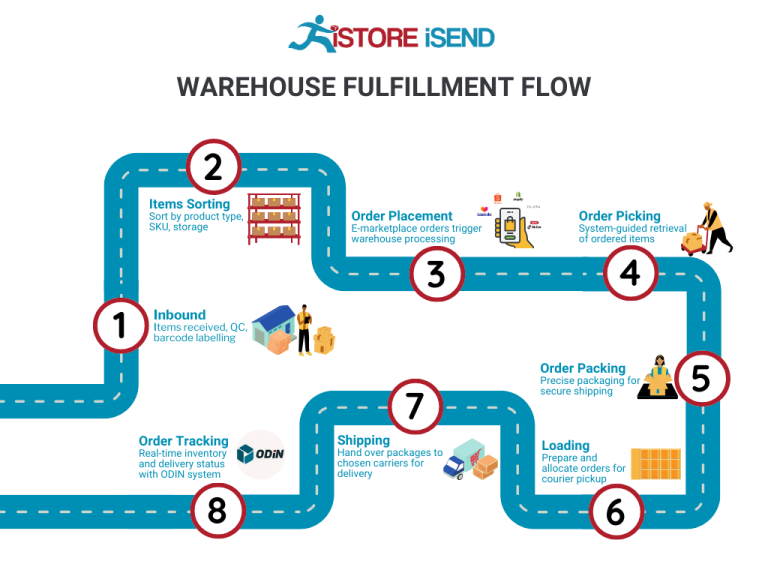
The significance of this step lies in its direct impact on order accuracy and customer satisfaction. Mistakes during picking can lead to shipping the wrong items, which can frustrate customers and lead to returns. Techniques such as batch picking (picking multiple orders at once) or wave picking (picking items based on shipping schedules) can optimize this process, improving efficiency and reducing labor costs.
4. Order Packing
After items are picked, they move to the packing stage, where they are prepared for shipment. This involves securely packaging the items to prevent damage during transit, labeling the packages with shipping information, and including any necessary paperwork, such as invoices or packing slips.
The packing process is essential for several reasons. First, it ensures that products arrive at their destination in excellent condition, which is crucial for maintaining customer satisfaction. Second, proper packing helps minimize shipping costs by ensuring that packages are the appropriate size and weight for their contents. Utilizing packing materials like bubble wrap, air pillows, and appropriate box sizes can significantly reduce the risk of damage and enhance the overall shipping experience.
5. Shipping & Delivery
The final step in the order fulfillment process is shipping and delivery. Once orders are packed, they are handed off to carriers for transportation to the customer. This stage involves selecting the best shipping method based on factors like cost, speed, and destination. Many businesses use shipping software to streamline this process, allowing them to compare rates from various carriers and print shipping labels quickly.
Shipping and delivery are critical to the customer experience. Timely delivery can significantly impact customer satisfaction and retention. Businesses should monitor shipping performance metrics, such as on-time delivery rates and shipping costs, to continuously improve their fulfillment processes. Additionally, providing customers with tracking information enhances transparency and keeps them informed about their order status, fostering trust and loyalty.
By understanding and optimizing each step of the order fulfillment process, e-commerce businesses can enhance their operational efficiency, improve customer satisfaction, and ultimately drive growth. Each stage is interconnected, and attention to detail at every step is crucial for successful fulfillment.
Comparing Fulfillment Models: In-House vs. 3PL vs. Dropshipping
Fulfillment Model Comparison
| Model | Who Handles Inventory | Best For (Business Stage) | Key Advantage | Key Disadvantage |
|---|---|---|---|---|
| In-House Fulfillment | The business itself | Startups and small businesses | Full control over inventory and operations | High overhead costs and resource-intensive |
| Third-Party Logistics (3PL) | A third-party provider | Growing businesses and scale-ups | Scalable, flexible, and cost-effective | Less control over inventory and potential quality issues |
| Dropshipping | Supplier or manufacturer | New entrants and niche markets | Low upfront investment and no inventory costs | Lower profit margins and reliance on suppliers |
In-House Fulfillment
In-house fulfillment refers to the process where an e-commerce business manages its entire order fulfillment process internally. This includes everything from inventory storage and order picking to packing and shipping. For startups and small businesses, in-house fulfillment can provide a significant advantage, as it allows for complete control over inventory management and customer experience. The owner can directly oversee operations, ensuring that orders are processed quickly and accurately, which can enhance customer satisfaction. However, in-house fulfillment often comes with high overhead costs. Businesses need to invest in warehouse space, hire staff, and manage logistics, which can be resource-intensive. This model may become less feasible as the business scales, leading many to consider outsourcing options as demand increases.
Third-Party Logistics (3PL)
Third-party logistics, or 3PL, involves outsourcing the fulfillment process to a specialized provider that handles inventory storage, order processing, and shipping on behalf of the business. This model is particularly beneficial for growing businesses looking to scale their operations without the burden of managing logistics in-house. By partnering with a 3PL, businesses can access a broader range of services, including inventory management, shipping optimization, and even returns handling. The key advantage of 3PL is its scalability and flexibility; businesses can easily adjust their logistics needs based on sales fluctuations without significant investments in infrastructure. However, reliance on a third-party provider can lead to less control over inventory and fulfillment processes. Potential issues may arise regarding the quality of service and product handling, which can impact customer satisfaction if not monitored closely.
Dropshipping
Dropshipping is a fulfillment model where the retailer does not keep products in stock but instead transfers customer orders and shipment details to the manufacturer or supplier, who then ships the products directly to the customer. This model is particularly attractive for new entrants and businesses operating in niche markets, as it requires minimal upfront investment and eliminates the need for inventory management. The primary advantage of dropshipping is the low financial barrier to entry; businesses can offer a wide range of products without the risks associated with holding inventory. However, dropshipping comes with notable disadvantages, including lower profit margins due to reliance on suppliers and potential delays in shipping, which can affect customer satisfaction. Additionally, businesses must depend heavily on their suppliers for product quality and availability, making it crucial to establish reliable partnerships to mitigate risks.
Conclusion
When evaluating fulfillment models, e-commerce business owners must consider their specific needs, resources, and growth ambitions. Each model—In-house fulfillment, 3PL, and dropshipping—offers unique benefits and challenges that can significantly impact overall operations and customer satisfaction. By understanding these differences, businesses can make informed decisions that align with their operational strategy and market demands, paving the way for sustainable growth and success in the competitive e-commerce landscape.
A Deep Dive into Amazon FBA: Pros, Cons, and Who It’s For
What is Fulfillment by Amazon (FBA)?
Fulfillment by Amazon (FBA) is a service offered by Amazon that allows e-commerce sellers to store their products in Amazon’s fulfillment centers. Amazon takes care of storage, packaging, and shipping of these products to customers, effectively acting as a third-party logistics provider. This means that when a customer orders a product, Amazon handles all aspects of the fulfillment process, including inventory management, order processing, and customer service. Sellers using FBA can also benefit from Amazon’s vast distribution network, which can lead to faster delivery times and improved customer satisfaction.
How FBA Works
-
Inventory Preparation: Sellers prepare their products according to Amazon’s guidelines, which include proper labeling and packaging.
-
Shipping to Amazon: Sellers send their inventory to Amazon’s fulfillment centers. Amazon provides shipping plans to help sellers determine how much inventory to send and to which fulfillment center.
-
Storage: Once the products arrive, they are stored in Amazon’s warehouses until an order is placed.
-
Order Fulfillment: When a customer purchases a product, Amazon picks, packs, and ships the order on behalf of the seller. This includes handling returns and customer inquiries.
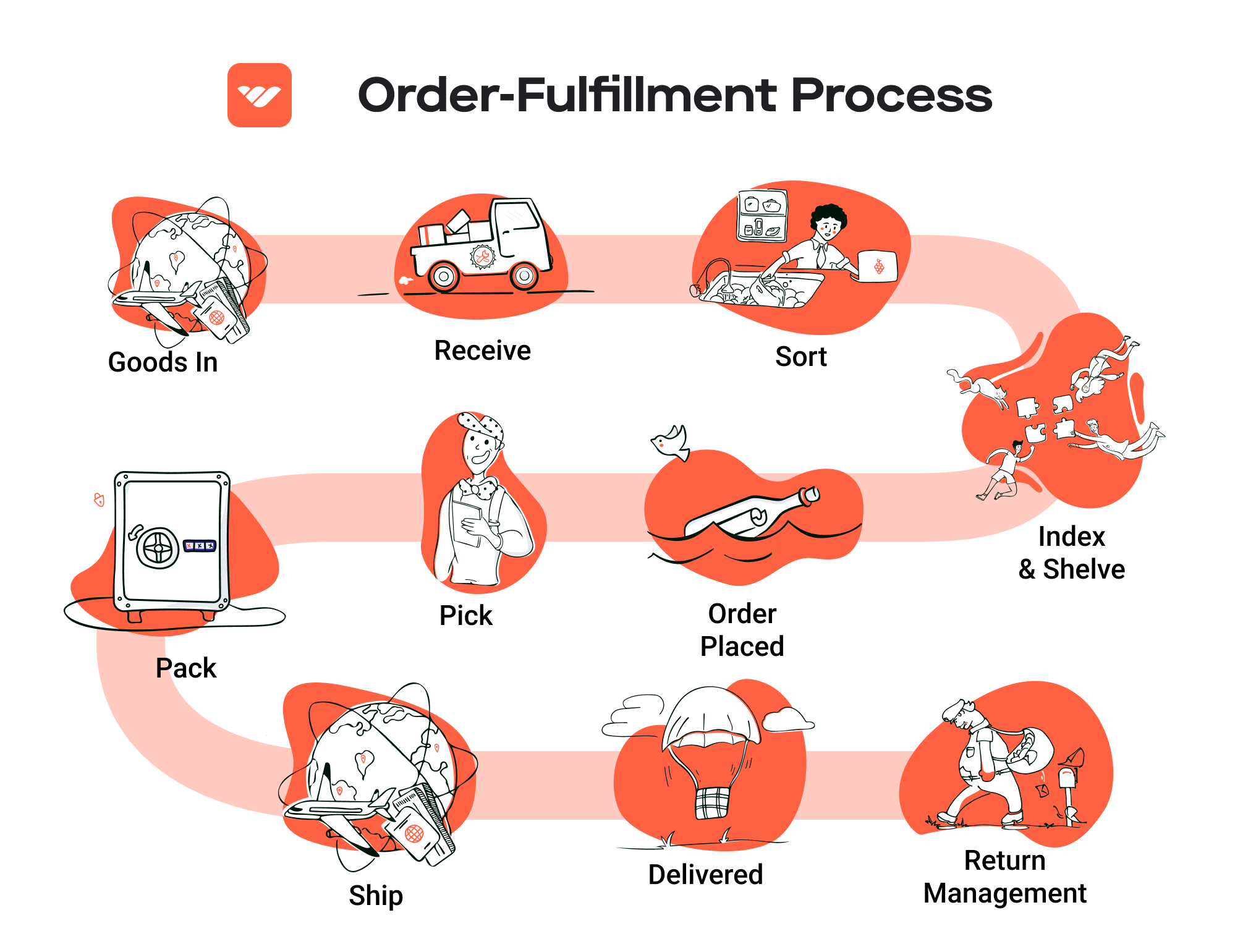
-
Payment: After the order is shipped, Amazon deducts its fees from the sale price and deposits the remaining amount into the seller’s account.
Pros of Using FBA
-
Prime Eligibility: Products fulfilled by Amazon are eligible for Amazon Prime, which can significantly boost sales. Prime members often prefer products that offer fast and free shipping, making FBA a valuable option for sellers looking to reach this audience.
-
Customer Trust: Amazon is a trusted brand with a strong reputation for customer service. By using FBA, sellers can leverage this trust, as customers often feel more secure purchasing products that are fulfilled by Amazon.
-
Multi-Channel Fulfillment: FBA allows sellers to fulfill orders not only on Amazon but also on other platforms like eBay, Shopify, and their own websites. This flexibility can streamline operations and improve efficiency across various sales channels.
-
Scalability: FBA enables sellers to scale their businesses without the logistical headaches associated with managing their own warehouses and fulfillment operations. This can be particularly advantageous for sellers experiencing rapid growth.
-
Time Savings: By outsourcing fulfillment to Amazon, sellers can focus on other areas of their business, such as marketing and product development, rather than spending time on order processing and shipping.
Cons of Using FBA
-
High Fees: Amazon charges various fees for FBA, including storage fees and fulfillment fees. These costs can add up quickly, especially for sellers with low margins or those storing large amounts of inventory.
-
Strict Inventory Rules: Amazon has specific guidelines regarding inventory management, including restrictions on certain products and the requirement to adhere to their labeling and packaging standards. Non-compliance can lead to penalties or even suspension of seller accounts.
-
Commingling Risks: FBA operates on a commingling model, where products from different sellers are stored together. This can pose risks if a customer receives a damaged or defective product from another seller, potentially harming the original seller’s reputation.
-
Limited Control: Once inventory is sent to Amazon, sellers have limited control over the fulfillment process. This includes aspects such as packaging and shipping speed, which can affect customer satisfaction.
-
Complex Returns Management: While Amazon handles returns, the process can be complex for sellers, especially if they receive damaged products back or if there are discrepancies in inventory counts.
Who is FBA Best For?
Fulfillment by Amazon is an excellent choice for a variety of e-commerce businesses, particularly those looking to scale quickly and efficiently. Here are some profiles of businesses that may benefit the most from FBA:
-
Small to Medium-Sized Businesses: Sellers who may not have the resources to manage their own fulfillment centers can benefit from Amazon’s infrastructure, allowing them to focus on growing their business.
-
Brands Looking for Credibility: New or lesser-known brands can leverage Amazon’s reputation to build trust with customers, especially if they are selling products in competitive markets.
-
Sellers with High Turnover Products: Businesses that sell products with consistent demand can benefit from FBA’s quick shipping times and customer service, helping to maximize sales and improve customer satisfaction.
-
Sellers Targeting Prime Customers: If a seller’s target market includes Amazon Prime members, FBA can be a vital tool to reach this audience effectively.
-
Multi-Channel Sellers: Businesses that sell across multiple platforms can benefit from the streamlined fulfillment process FBA offers, helping to manage inventory and shipping from one central location.
In conclusion, while Fulfillment by Amazon offers numerous advantages, including access to Prime customers and reduced operational burdens, it also comes with significant costs and risks. E-commerce business owners must carefully evaluate whether FBA aligns with their goals, product types, and target audiences before making the leap. By weighing the pros and cons, sellers can make informed decisions about their fulfillment strategies to best support their growth and success.
Core Services Offered by Fulfillment Centers
Inventory Management & Warehousing
Inventory management and warehousing are fundamental services provided by fulfillment centers, ensuring that e-commerce businesses maintain optimal stock levels while minimizing excess inventory. This service involves the storage of goods in a secure, organized manner, allowing for quick retrieval and shipping as orders come in.
The benefits of effective inventory management are multifaceted. Firstly, it provides real-time visibility into stock levels, enabling businesses to make informed purchasing decisions and avoid stockouts or overstock situations. This is particularly crucial for e-commerce businesses, where demand can fluctuate rapidly. Moreover, fulfillment centers typically employ advanced inventory management software that integrates with online storefronts, ensuring seamless updates and accurate forecasting. This capability not only saves time but also reduces operational costs associated with manual inventory tracking.
Pick and Pack Services
Pick and pack services represent a core component of the fulfillment process. This service entails the selection (or “picking”) of items from inventory based on customer orders, followed by the packing of those items for shipment. Fulfillment centers employ streamlined processes and technology, such as barcoding systems, to ensure accuracy and efficiency in order fulfillment.
The primary benefit of pick and pack services is the enhancement of order accuracy and speed. For e-commerce businesses, timely delivery and correct orders are paramount to customer satisfaction. By utilizing a fulfillment center’s pick and pack services, businesses can significantly reduce the likelihood of errors that can lead to returns and customer dissatisfaction. Additionally, this service allows businesses to scale operations without the need for substantial investments in labor and infrastructure, as fulfillment centers can handle fluctuations in order volume seamlessly.
Kitting and Assembly
Kitting and assembly services involve combining multiple products or components into a single package or kit before shipping. This could include bundling items for promotional offers, assembling products that require multiple parts, or preparing seasonal kits for specific marketing campaigns. Fulfillment centers often provide this service as part of their offerings, allowing e-commerce businesses to streamline their operations.
The benefits of kitting and assembly are particularly relevant for businesses looking to enhance their product offerings and customer experience. By offering bundled products, businesses can increase average order value and provide customers with a more convenient shopping experience. Moreover, this service reduces the time and effort required for assembly and packaging, allowing businesses to focus on core activities such as marketing and customer engagement. By outsourcing kitting and assembly to fulfillment centers, businesses can also ensure that these processes are handled efficiently and professionally, minimizing the risk of errors.
Returns Management (Reverse Logistics)
Returns management, often referred to as reverse logistics, is a critical service provided by fulfillment centers that deals with the process of handling product returns. This includes receiving returned items, inspecting them for damage, restocking items that are in sellable condition, and processing refunds or exchanges. Given the high return rates in e-commerce—particularly in sectors like fashion—an efficient returns management process is essential.
The benefits of effective returns management cannot be overstated. A well-structured returns process enhances customer satisfaction by making it easy for customers to return items, thereby fostering trust and loyalty. Additionally, fulfillment centers often have established systems for processing returns quickly, which can lead to faster refunds and exchanges. For e-commerce businesses, this efficiency not only improves customer experience but also helps in maintaining accurate inventory levels. Furthermore, by analyzing return data, businesses can gain insights into product performance and customer preferences, allowing for better inventory planning and product development.
Conclusion
In summary, the core services offered by fulfillment centers—inventory management and warehousing, pick and pack services, kitting and assembly, and returns management—are essential for e-commerce businesses looking to scale efficiently. By leveraging these services, businesses can enhance operational efficiency, reduce costs, and improve customer satisfaction. As the e-commerce landscape continues to evolve, partnering with a capable fulfillment center can provide a competitive edge and support sustained growth.
How to Choose a Fulfillment Partner: A 6-Point Checklist
Location & Warehouse Network
Importance: The geographical location of your fulfillment partner’s warehouses can significantly impact shipping times and costs. A partner with strategically placed warehouses can help you reach your customers more efficiently, enhancing customer satisfaction through faster delivery.
Questions to Ask:
– Where are your warehouses located, and how many do you operate?
– How do you determine the best shipping routes and carriers for different regions?
– Do you have plans for expanding your warehouse network in the future?
Technology & Integrations
Importance: In today’s e-commerce environment, technology is crucial for seamless operations. A fulfillment partner with advanced technology can provide real-time inventory tracking, order management, and integration with your e-commerce platform, ensuring efficiency and accuracy.
Questions to Ask:
– What technology do you use for order processing, inventory management, and shipping?
– Can your system integrate with our e-commerce platform (e.g., Shopify, WooCommerce, Amazon)?
– Do you provide APIs for custom integrations, and how often do you update your technology?
Specializations (e.g., cold storage, oversized items)
Importance: Depending on your product types, it may be essential to partner with a fulfillment center that has specific capabilities. For example, if you sell perishable goods, you’ll need a partner with cold storage facilities. If your products are oversized or require special handling, ensure the partner can accommodate these needs.
Questions to Ask:
– What types of products do you specialize in handling?
– Do you have specialized facilities for temperature-sensitive items or oversized products?
– Can you provide examples of how you have handled unique product requirements for other clients?
Scalability & Capacity
Importance: As your business grows, your fulfillment needs will evolve. It’s vital to choose a partner that can scale operations in response to your growth, whether through seasonal spikes or long-term expansion.
Questions to Ask:
– How do you manage fluctuations in order volume, such as during peak seasons?
– What is your current capacity, and how quickly can you scale to accommodate increased demand?
– Have you supported other clients in scaling their operations, and can you share examples?
Pricing and Contracts
Importance: Understanding the pricing structure and contract terms is essential to avoid unexpected costs. Transparency in pricing can help you budget accurately and assess the overall value of the partnership.
Questions to Ask:
– What is your pricing model (e.g., per order, monthly fees, storage fees)?
– Are there additional costs for services such as returns processing or special packaging?
– Can you provide a sample contract, and what are the terms for contract renewal or cancellation?
Customer Support & Reviews
Importance: Reliable customer support is crucial for resolving issues quickly and maintaining operational flow. Additionally, researching reviews and testimonials can give you insight into the partner’s reliability and service quality.
Questions to Ask:
– What customer support options do you offer (e.g., phone, email, live chat)?
– How quickly can we expect a response to support inquiries?
– Can you provide references or case studies from current or past clients to demonstrate your service quality?
Conclusion
Choosing the right fulfillment partner is a critical decision that can affect your business’s efficiency, customer satisfaction, and overall growth. By systematically evaluating potential partners against this checklist, you can make a more informed choice that aligns with your business needs and goals. Remember to keep communication open and ensure that your selected partner can adapt to your evolving requirements, providing a solid foundation for your e-commerce operations.
Understanding Fulfillment Pricing: A Breakdown of Common Fees
Initial Setup Fees
When partnering with a fulfillment center, one of the first costs you might encounter is the initial setup fee. This fee covers the administrative work involved in onboarding your business, which may include account creation, system integration, and initial consultations. The setup process often involves customizing the fulfillment system to meet your specific operational needs, such as integrating your e-commerce platform or establishing inventory management protocols.
Typically, initial setup fees can range from a few hundred to several thousand dollars, depending on the complexity of your requirements and the fulfillment provider’s capabilities. To ensure you are not overpaying, request a detailed breakdown of what the setup fee includes and compare it with other providers.
Receiving Fees
Receiving fees are charged when your inventory arrives at the fulfillment center. This fee covers the labor and resources needed to unload, inspect, and input your products into the inventory management system. It is calculated based on the number of pallets or boxes received and can also vary depending on the complexity of the receiving process, such as whether items need to be counted or labeled.
For example, a fulfillment center might charge a flat rate per pallet received or a per-unit fee for each item. Understanding this fee structure is crucial, especially if you plan on sending bulk shipments. Always clarify how receiving fees are calculated and if there are any additional charges for special handling or inspections.
Storage Fees (per pallet/bin)
Storage fees are incurred for keeping your inventory in the fulfillment center. These fees are typically charged on a monthly basis and can be calculated per pallet, bin, or cubic foot. Storage fees can vary widely depending on the location of the fulfillment center, the demand for space, and the duration of storage.
For instance, some fulfillment centers may charge a lower rate for long-term storage, while others might impose additional fees for items stored beyond a certain period (often six months). To manage these costs effectively, consider negotiating storage fees based on your average inventory turnover and plan your inventory levels to avoid long-term storage fees.
Pick & Pack Fees (per item/order)
Pick and pack fees are among the most significant costs associated with order fulfillment. These fees cover the labor involved in picking items from the shelves, packing them appropriately, and preparing them for shipment. Typically, fulfillment centers charge a fee per item or per order, depending on how they structure their pricing.
For example, a fulfillment center might charge $0.50 per item picked and packed, or a flat fee of $2.00 per order regardless of the number of items. Understanding the specifics of these fees is essential, especially if you have a wide range of products with varying sizes and weights. To optimize costs, consider consolidating items into fewer orders or negotiating bulk pricing for high-volume orders.
Shipping Fees
Shipping fees are the final component of fulfillment pricing and can vary significantly based on several factors, including the shipping method, carrier, package dimensions, and destination. Fulfillment centers typically pass on shipping costs directly to you, often providing multiple shipping options (e.g., standard, expedited, same-day) for you to choose from.
To calculate shipping fees, fulfillment centers may use a tiered pricing model based on weight or dimensions. Some providers might also charge a handling fee in addition to the shipping costs. It’s essential to understand these variables to select the most cost-effective shipping options for your business needs.
Tips for Getting an Accurate Quote
-
Request Detailed Quotes: Always ask for a comprehensive breakdown of costs from fulfillment providers. This should include all potential fees associated with their services.
-
Compare Multiple Providers: Obtain quotes from several fulfillment centers to compare pricing structures and services offered. This will give you a better understanding of the market rates.
-
Clarify Terms and Conditions: Ensure you fully understand the terms related to each fee type, including any minimum charges, additional costs for special services, and how fees may change based on your volume.
-
Negotiate: Don’t hesitate to negotiate terms. Many fulfillment centers are open to discussions, especially if you can demonstrate the potential for high order volumes.
-
Evaluate Your Needs: Understand your business’s unique requirements, such as inventory turnover, order frequency, and shipping destinations, to better assess which pricing model works best for you.
By carefully evaluating each of these components and maintaining clear communication with your fulfillment partner, you can effectively manage costs and optimize your e-commerce operations.
Frequently Asked Questions (FAQs) about Fulfillment
1. What is another word for fulfillment in e-commerce?
In e-commerce, “fulfillment” can be synonymous with terms like “execution,” “realization,” and “completion.” It refers to the process of completing customer orders, which includes picking, packing, and shipping products.
2. What is the difference between a warehouse and a fulfillment center?
A warehouse is primarily a storage facility for inventory, focusing on holding goods until they are needed. In contrast, a fulfillment center is a specialized facility that not only stores products but also handles the entire order fulfillment process, including packing and shipping directly to customers. Fulfillment centers are designed for efficiency in processing orders quickly.
3. What is a 3PL (Third-Party Logistics)?
A 3PL, or third-party logistics provider, is a service that manages a company’s logistics and supply chain operations. This includes warehousing, order fulfillment, shipping, and sometimes even inventory management. By outsourcing these functions to a 3PL, e-commerce businesses can focus on core activities while ensuring that their logistics are handled by experts.
4. How much do fulfillment services cost?
The cost of fulfillment services varies widely depending on factors such as order volume, storage needs, and specific services required. Generally, fees can include storage fees (per pallet or cubic foot), picking and packing fees (per order), and shipping costs. It’s essential for businesses to obtain quotes from multiple providers to compare pricing and services.
5. What is the order fulfillment process?
The order fulfillment process typically involves several key steps: receiving inventory, storing products, processing customer orders, picking items from inventory, packing them for shipment, and finally shipping the orders to customers. Efficient management of each step is crucial to ensure timely delivery and customer satisfaction.
6. What are the benefits of using a fulfillment center?
Using a fulfillment center offers several advantages, including reduced overhead costs, faster shipping times, improved inventory management, and scalability. Businesses can also benefit from the expertise and technology that fulfillment centers provide, which can lead to enhanced customer experiences.
7. How can I choose the right fulfillment partner?
When selecting a fulfillment partner, consider factors such as their location, technology capabilities, pricing structure, scalability, and customer service. It’s also beneficial to look for a provider with experience in your industry and positive reviews from other businesses.
8. What are the common fulfillment models?
Common fulfillment models include in-house fulfillment, third-party fulfillment (3PL), and dropshipping. In-house fulfillment means managing all logistics internally, while dropshipping involves a supplier handling inventory and shipping directly to customers, minimizing the seller’s responsibilities.
9. How does technology impact fulfillment services?
Technology plays a vital role in modern fulfillment services by enabling real-time inventory management, automated order processing, and data analytics. Advanced software solutions can help streamline operations, reduce errors, and provide insights into customer behavior, ultimately improving efficiency and customer satisfaction.
10. What challenges might I face with fulfillment?
Some common challenges in fulfillment include managing inventory levels, handling returns efficiently, ensuring timely shipping, and dealing with seasonal fluctuations in order volume. To mitigate these challenges, businesses should invest in robust inventory management systems and maintain open communication with their fulfillment partners.
Conclusion: Is Outsourcing Fulfillment the Right Move for Your Business?
Evaluating the Benefits of Outsourcing Fulfillment
Outsourcing fulfillment can be a transformative decision for e-commerce businesses seeking to scale efficiently. One of the most significant advantages is the time savings it provides. By delegating the complexities of inventory management, order processing, and shipping logistics to a specialized fulfillment service, business owners can redirect their focus towards core activities such as marketing, product development, and customer engagement. This shift not only enhances productivity but also allows for more strategic growth initiatives.
Scalability is another compelling reason to consider a fulfillment partner. As your business grows, the demands on your logistics operations will likely increase. A proficient fulfillment service can seamlessly accommodate fluctuations in order volume, whether during peak seasons or as your overall sales grow. This adaptability ensures that you can meet customer expectations without compromising on service quality, thus reinforcing brand loyalty.
Moreover, partnering with a fulfillment expert brings a wealth of experience and operational know-how. These providers often leverage sophisticated technology and industry best practices to optimize the supply chain, reduce shipping costs, and improve delivery times. Their expertise can be invaluable, especially for businesses that may lack the resources to develop such capabilities in-house.
However, it is crucial to choose the right fulfillment partner. Consider factors such as their track record, technology capabilities, and customer service standards. A well-aligned partnership can serve as a catalyst for growth, while a mismatched one could hinder your operations.
As a strategic next step, conduct a thorough audit of your current shipping processes. Assess where inefficiencies lie and determine if outsourcing fulfillment could alleviate these pain points. Taking this proactive measure can position your business for sustainable growth and operational excellence.
Important Disclaimer
⚠️ Important Disclaimer
The information in this guide is for educational purposes. Fulfillment services, pricing, and platform features change frequently. Always conduct your own due diligence and consult with providers directly before making business decisions.
